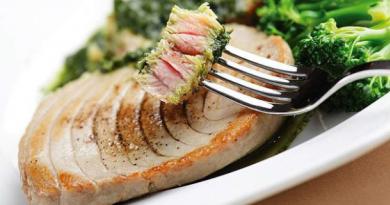It is in Russia or Ukraine that seafood is expensive. And in Asia, this is the most affordable food. In Thailand, Vietnam and the Philippines, people eat hundreds of tons of marine life every day. Well, judge for yourself: a large octopus costs about a dollar, and a plate of mussels is 80 cents ... Why not eat these very healthy seafood? They are high in protein and micronutrients and very low in calories. How do you not like seafood? You just don't know how to cook!
Recognizing all types of shells in the Philippine market is not easy. Well, let's start with the simplest - bivalve. These are mussels. There are several varieties. The smaller ones, called Manilla clam, taste very much like the mussels we used to buy frozen in our stores. Of course, fresh is much tastier.
Mussels in large shells are called Asian clam. They are more to the taste of the Chinese and Koreans. According to sellers in the market, they bring this product specifically for expats from Northeast Asia. For me personally, small clams are tastier, they are more tender and juicier.
How to choose shellfish? Pay attention to the sashes, they must be closed. If the shell is ajar or damaged, then such a mollusk is already dead and cannot be eaten. Shells should smell only of the sea. If the smell is unpleasant, then you should not buy mussels.
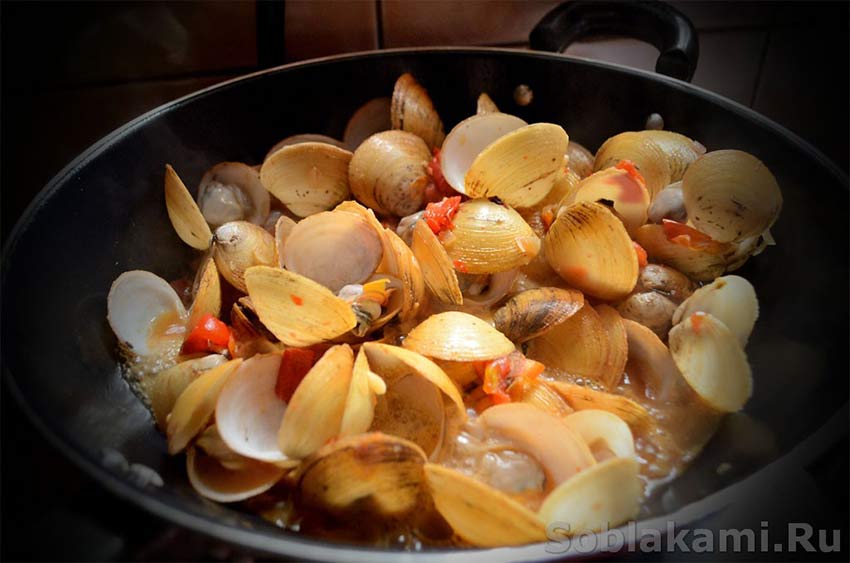
How to cook shellfish? For Europeans to like mussels, it is not enough just to boil them in water. In the Philippines, mussels are stewed in their own juices with spices, onions, garlic and chili peppers and a bit of coconut vinegar. Another good recipe is with the addition of coconut milk. Mussels are placed in a ready-made sauce, cover the pan with a lid. After the shells open, you still need to stew the dish for 2 minutes and remove from heat. However, I have, which I wrote in a separate post. A very important clarification! Mussels that have not opened during cooking should not be eaten. They just need to be thrown away.
Several varieties are sold in Philippine markets. It is difficult for a European to understand the subtle difference between them. Sometimes sellers specially cut off the tips of the shells to make it easier to pull the snails out of there. If you have bought already crushed shells, then you should know: you need to cook them as soon as possible.
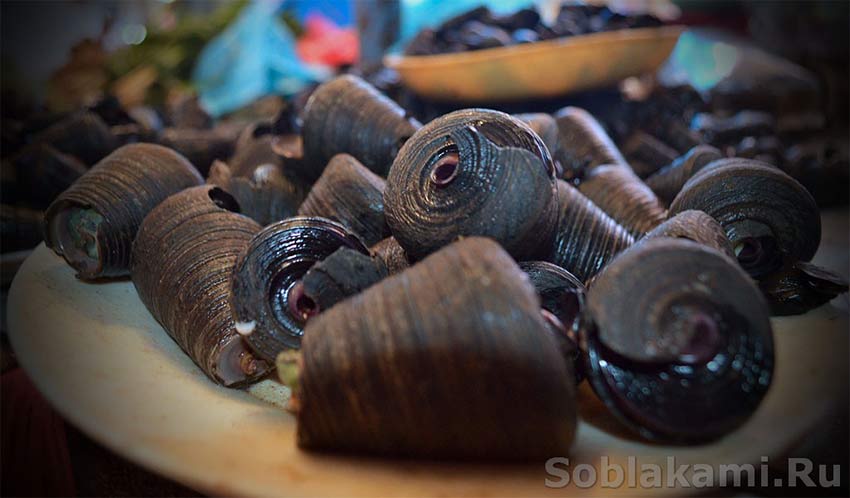
If you decide to buy whole shells, don't worry, I'll show you how to get the edible part yourself. You just need to cook them, and then the body of the snail can be easily removed with a fork.
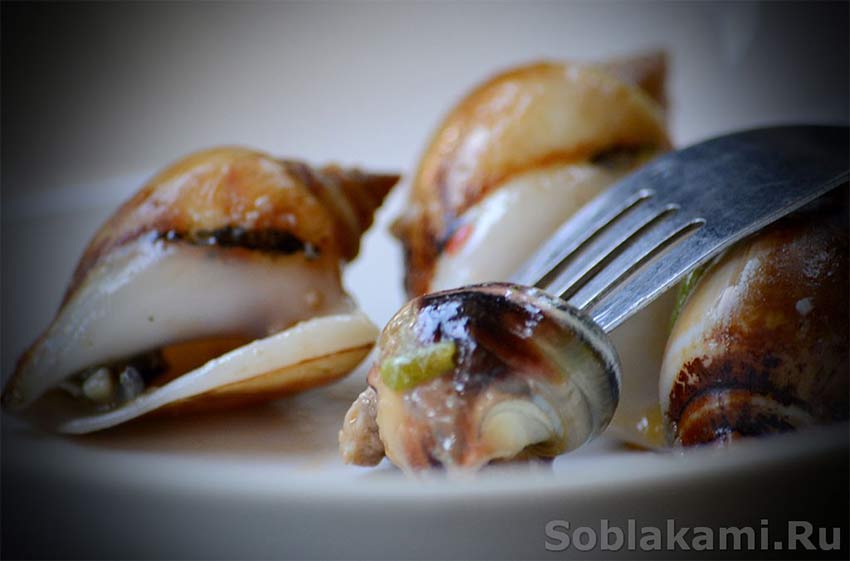
How to choose snails? Choose by scent. There is no darling, so the clams are fresh, you can buy. Sometimes you can see how they move their paws in their shells.
How to cook snails? Can be boiled in coconut milk with garlic, onion and spices. All cooking takes no more than 5-7 minutes.
There are several varieties of algae. I prefer those that look like bunches, they are called so - sea grapes.
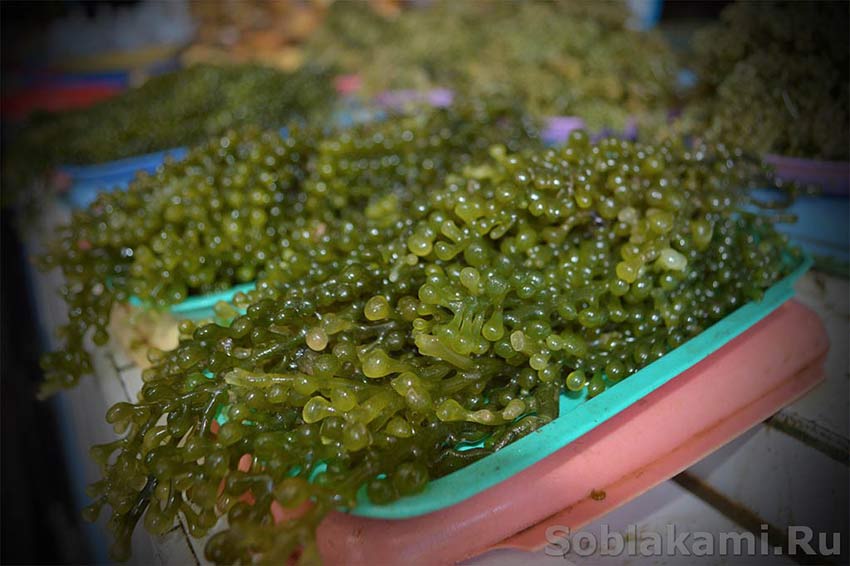
Seaweed is eaten raw, sprinkled with a little vinegar or calamansi juice (these are Filipino hybrids of lime and mandarin). The addition of these ingredients is mandatory, otherwise it will not taste good.


Choose according to appearance. The granules should be whole and firm. Soft algae should not be eaten.
This is a very specific dish that not only Asians like. Hedgehogs do not need heat treatment. The Filipinos open the prickly shell like we do a watermelon. The insides are sprinkled with calamansi juice or vinegar. Hedgehogs are considered a great delicacy in France and Spain. And there the way of eating is the same as in the Philippines.
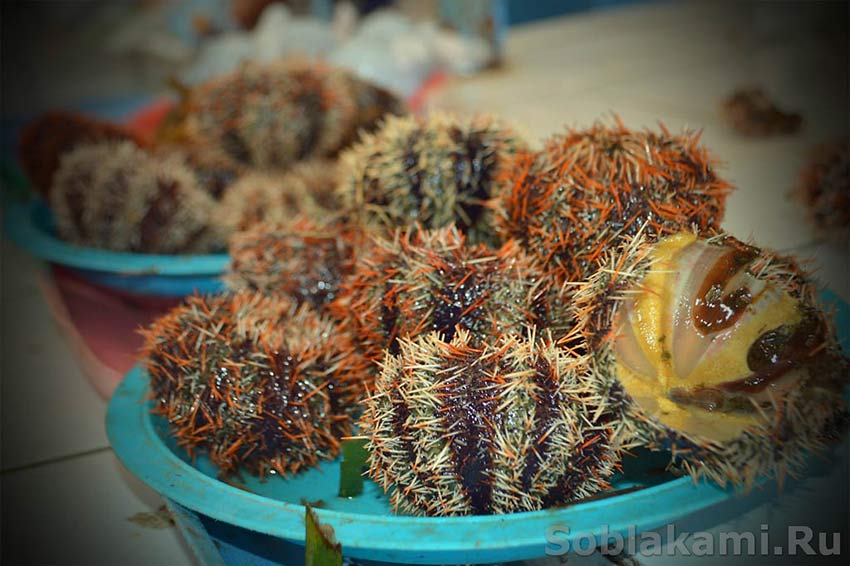
How to choose sea urchins? They must be alive and move their needles.
How to choose crabs? You have no idea what subtleties exist when choosing crabs! For example, they are distinguished by the place of catch - deep-sea or those that live closer to the surface. The price is about the same. It's already a matter of taste. Try both of those.
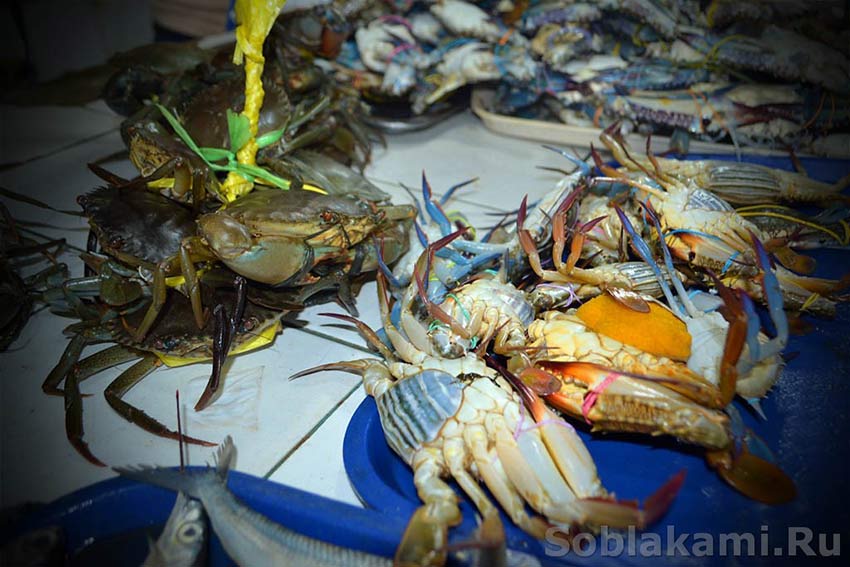
The gender of the crab is also important. For example, females have more fat and caviar. And males are a dietary option. You can understand what gender a crab is by turning it upside down. The photo clearly shows that the female has eggs under the tail, while the male does not have this tail at all.
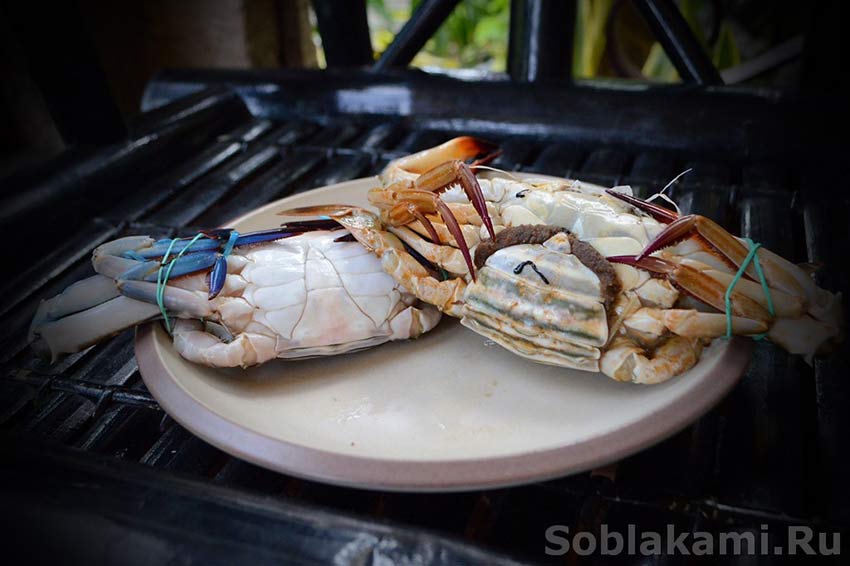
Choosing crabs is easy. If alive - great, but this happens rarely. A fresh crab is one in which the shell is dense, and when pressed on the belly, the finger does not push through it.
How to cook crabs? Crabs are best stewed in their own juice with the addition of spices. The main thing is not to digest. 10 minutes is enough. One little secret: to make the walls softer, Filipinos add a little sprite to the pan. Yep, that's the sprite you're thinking of - sweet soda. This is how I cooked crabs the day before and I can say that it is very tasty.
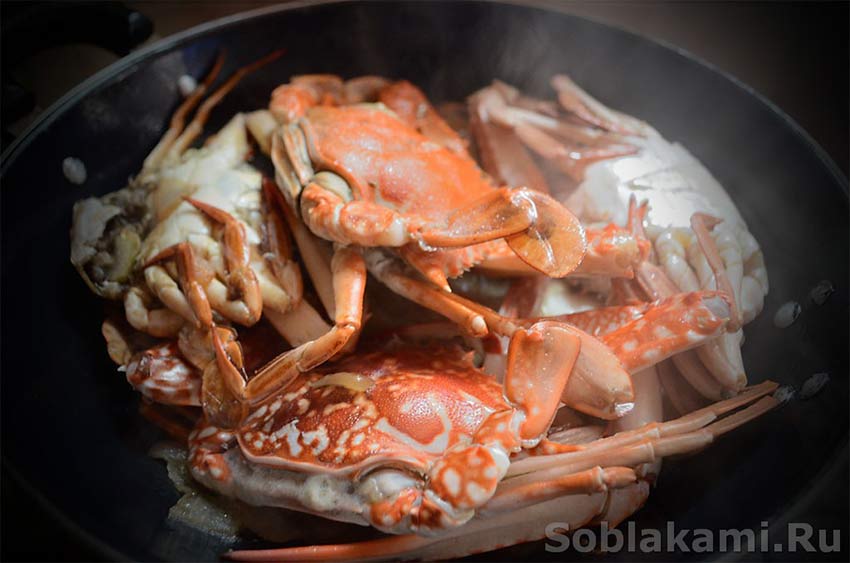
Well, what could be easier? We've made them frozen at home hundreds of times. However, personally for me they turned out rubber four times out of five.
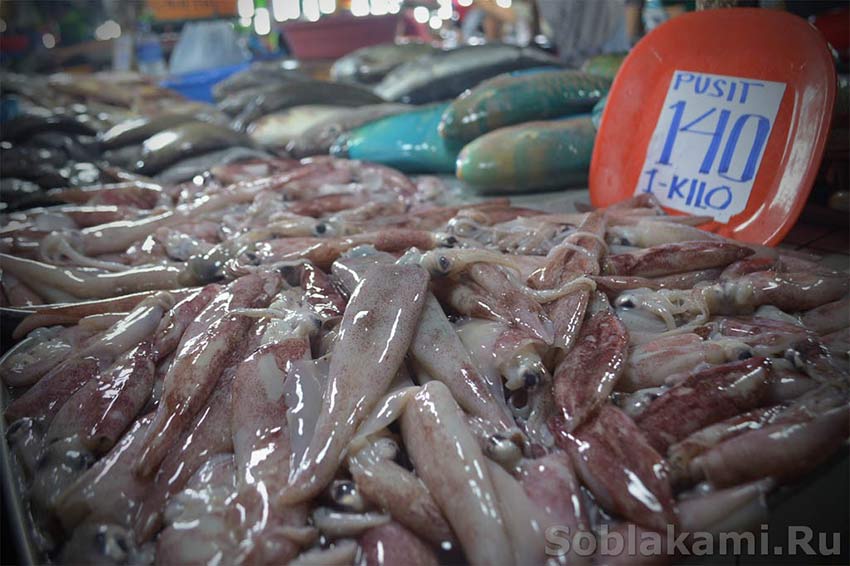
What are squids in Asian markets and how to choose them? Squids can differ in price twice. Large ones are cheaper, small ones are more expensive: the price varies from 60 to 140 pesos ($ 1.5-3.5) per kilogram. Also cheaper are those that are caught deep. They are usually larger and the meat is denser.
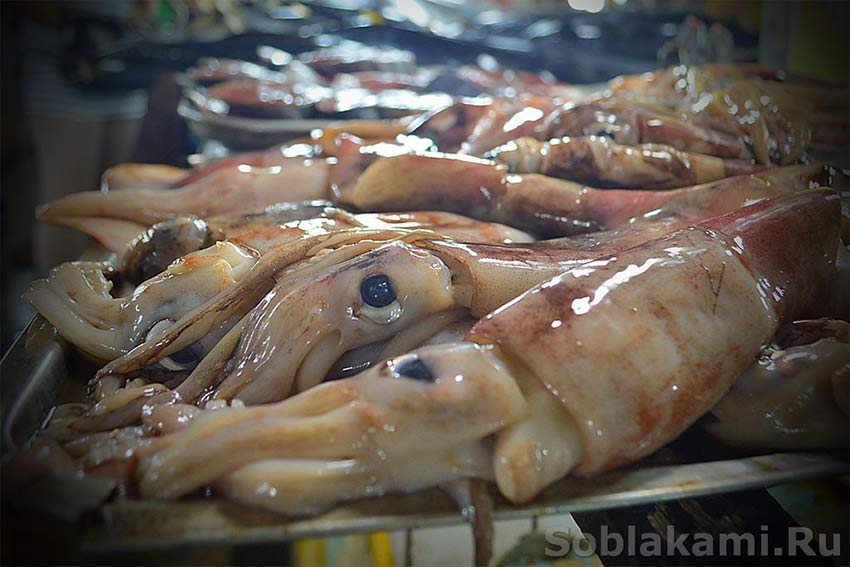
Black ink squids are also sold. If you love Italian cuisine, you will find many recipes in it on how to use squid ink to create a culinary masterpiece.
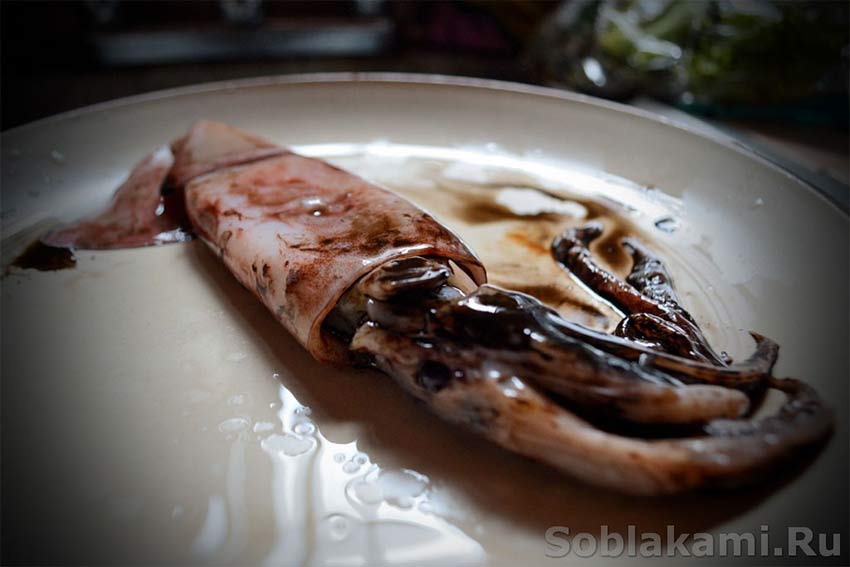
How to choose a squid? Stale squids are given out by a burst skin. This film is usually pink and must be whole, then the squid is fresh.
How to cook squid? First, the squid needs to be cleaned. The entrails and hard plates must be discarded. The carcass and tentacles are suitable for cooking. How many times have you chewed rubber meat? To prevent this from happening, you need to cook squid for no more than three minutes. Although the Filipinos make "Adobo" from this seafood, i.e. stew it with vegetables and spices for about 15-20 minutes. To be honest, the squid in Adobo are tough, it's best to stick to the three minute rule.
Octopus in the Philippines, like squid, is the most affordable protein food. A kilogram costs only 50-60 pesos ($1.5).
How to choose an octopus? Don't chase size. Small carcasses are softer and juicier. The eyes of an octopus should not be cloudy and dark. This is a sign that the octopus has been lying on the counter. Damaged and ugly tentacles are also a sign of staleness.
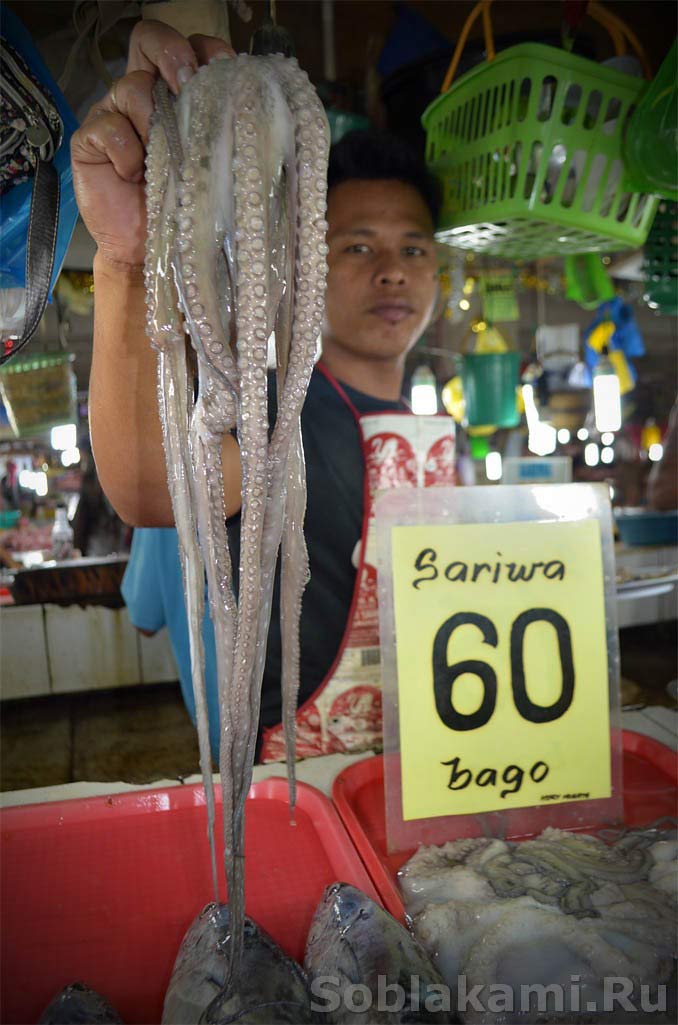
How to cook octopus? First you need to remove the ink bag that is inside. The skin does not need to be removed. Just finely chop. Our neighbor Kyron taught me a very quick Korean version of octopus. Onion, garlic, a little tomato paste, chili pepper powder are fried in a pan. When it all comes together and turns into a sauce, you need to add finely chopped octopus. Simmer for 3 minutes. It turns out very tasty. Just don't salt it all! The octopus is salty on its own.
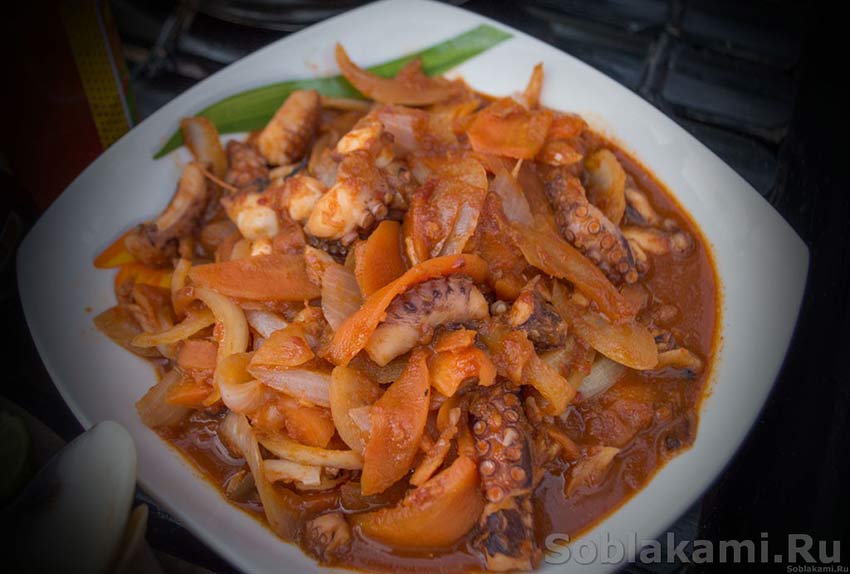
And finally, the most exotic Filipino creature is Tamilok. The Filipinos themselves admit that they eat it from time to time. This is more of a tourist amusement, for which locals travel to remote areas and collect worms. Tamilok is found in the trunks of rotting mangrove trees. Get him a real feat. You need to wander for a long time through the fetid thickets knee-deep or waist-deep in water, looking for slimy and long molluscs. In the markets, Tamilok is sold in this form - in a special marinade that protects the worm from spoilage. Ingredients of the marinade: sugar, salt, vinegar and pepper. A small bag costs 50 pesos ($1.2).
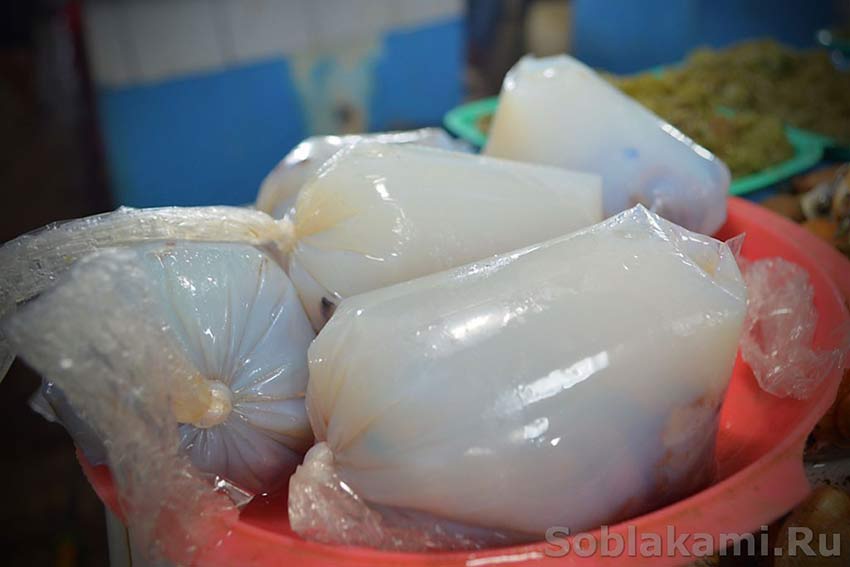
After wandering around the Internet, I was surprised to learn that Tamilok is not a worm, but a mollusk. Some compare its taste to oysters. Locals eat it with alcohol.
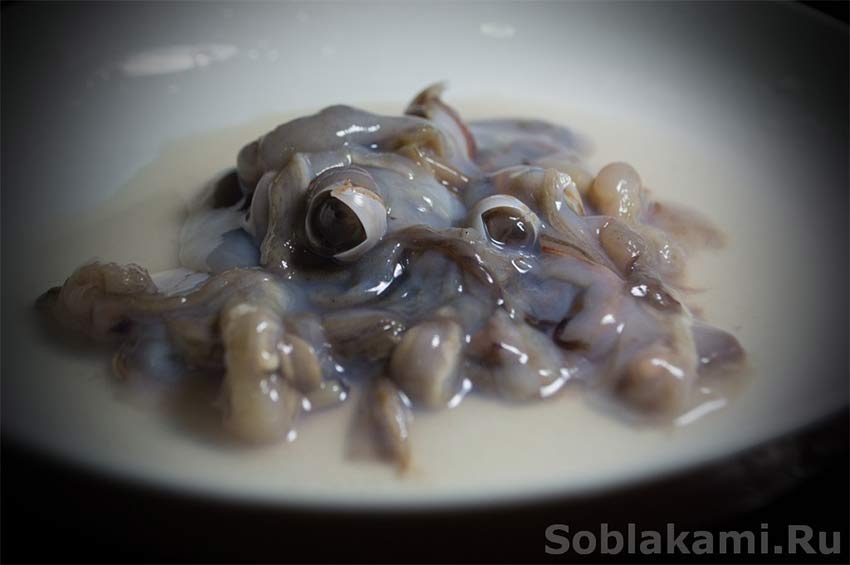
As for me, Tamilok is not intended for the stomach of a European. The taste of mud, the slimy consistency, the taste of vinegar... nothing special. I tried it and gave it to Carling. It turned out that the Filipino dog is also indifferent to the Tamilok.

There were many letters. And this is just the beginning. You still don't know anything about exotic Asian fish! In the Philippine markets, several dozen varieties are sold. Various colors and sizes. Can you imagine that Filipinos divide fish into 3 classes? I found out all the details about the fish of the highest quality - 1st class. It costs 200-300 pesos per kilo. And you definitely need to know about all the representatives of the elite category! More on that in one of the next posts...
By the way, have you read at least



